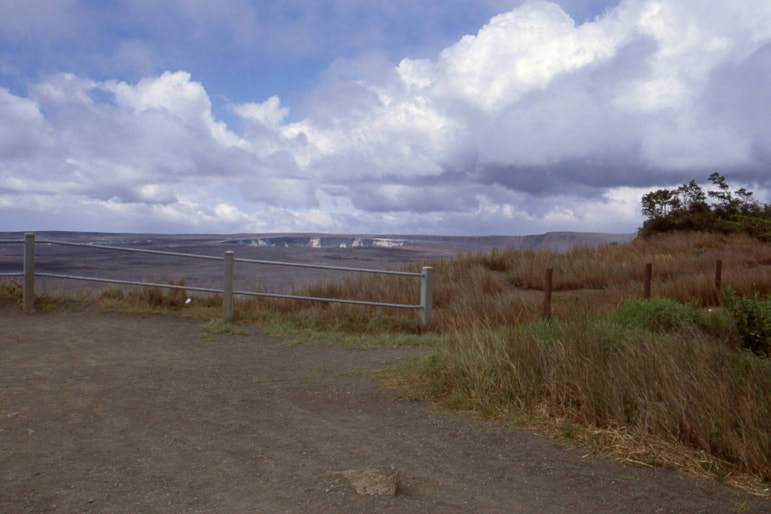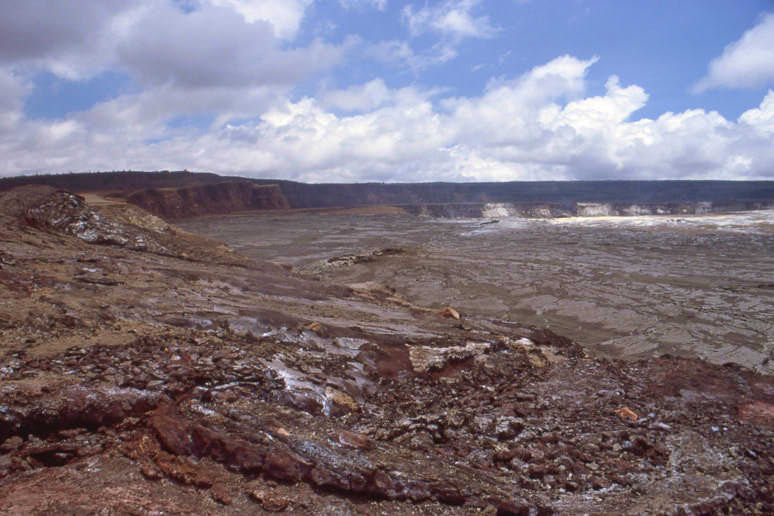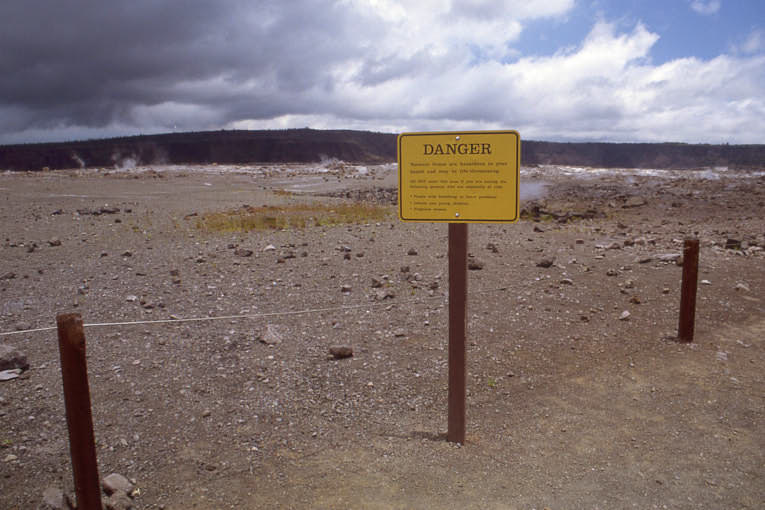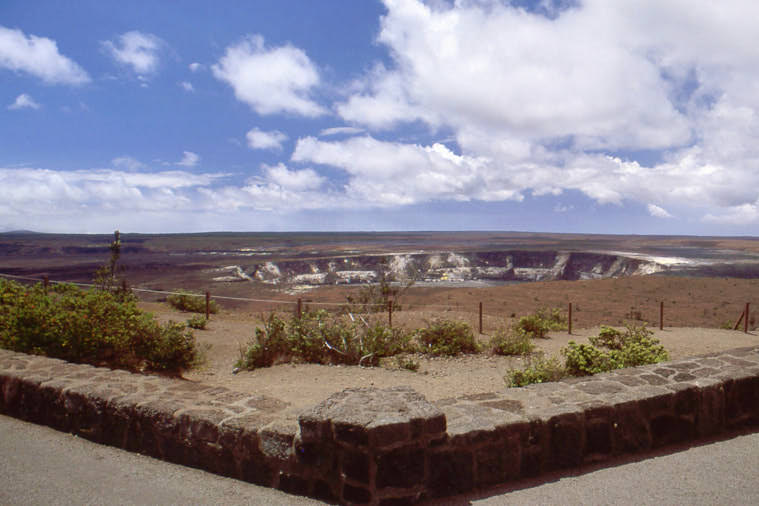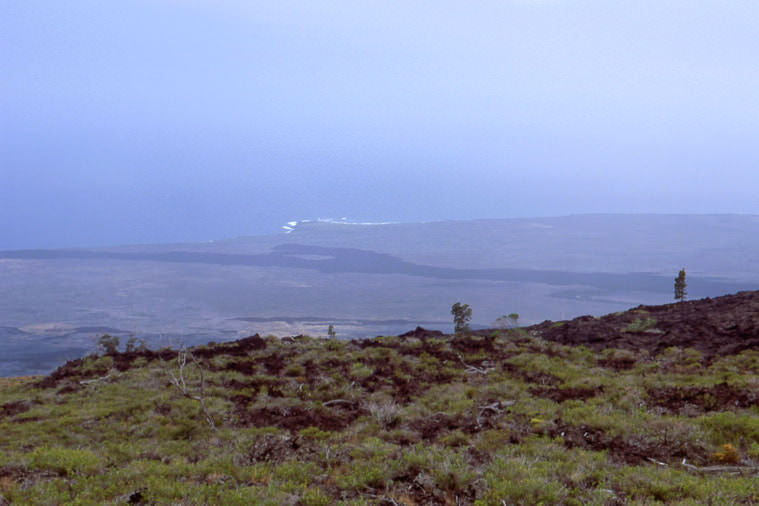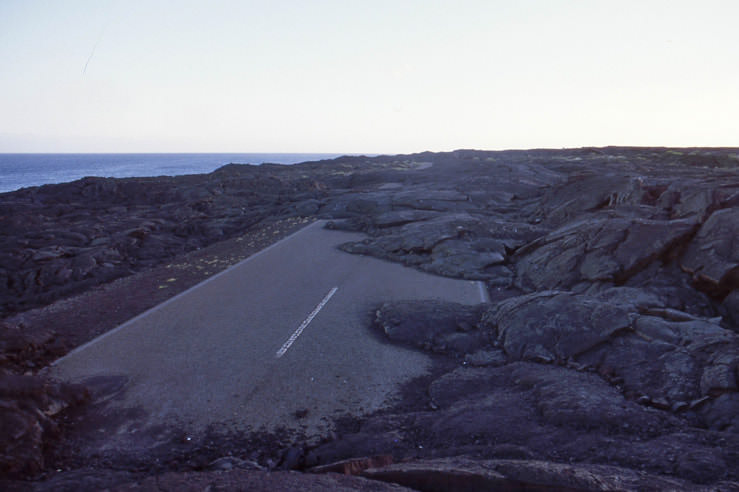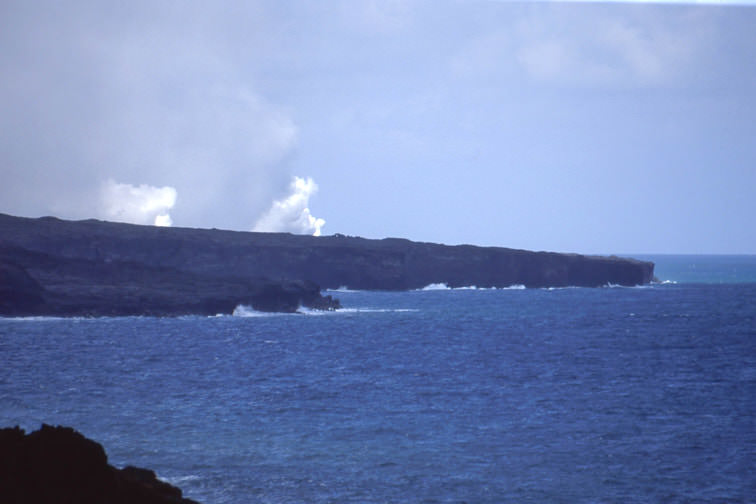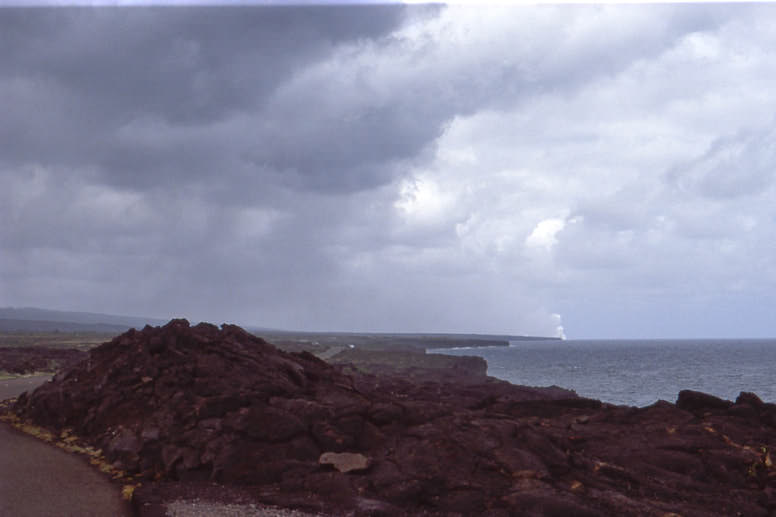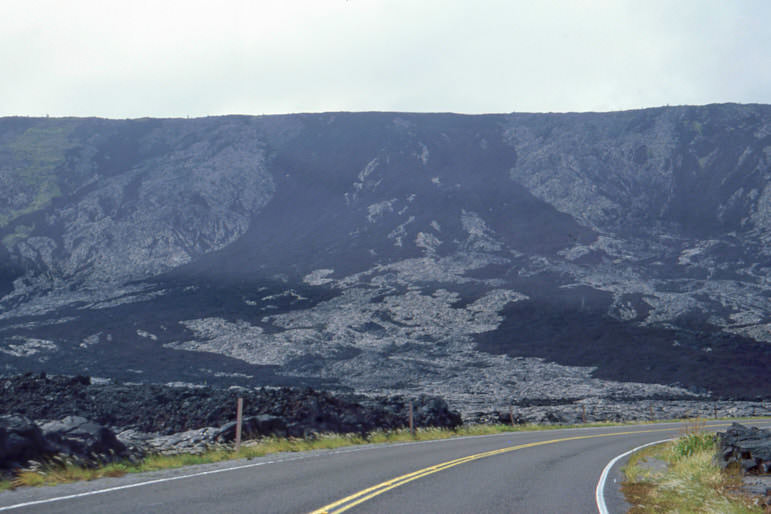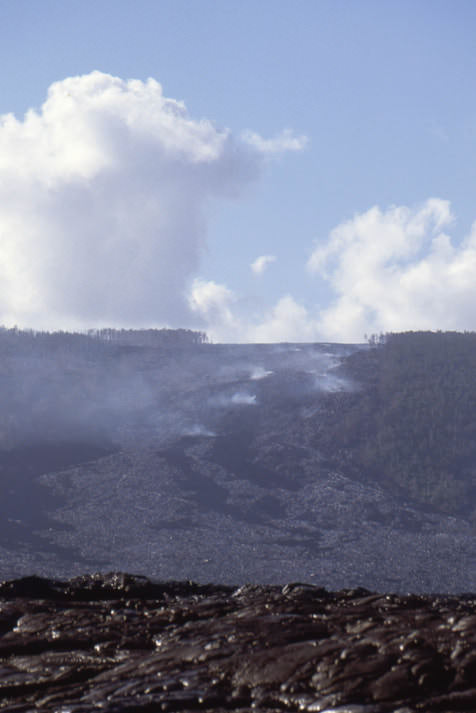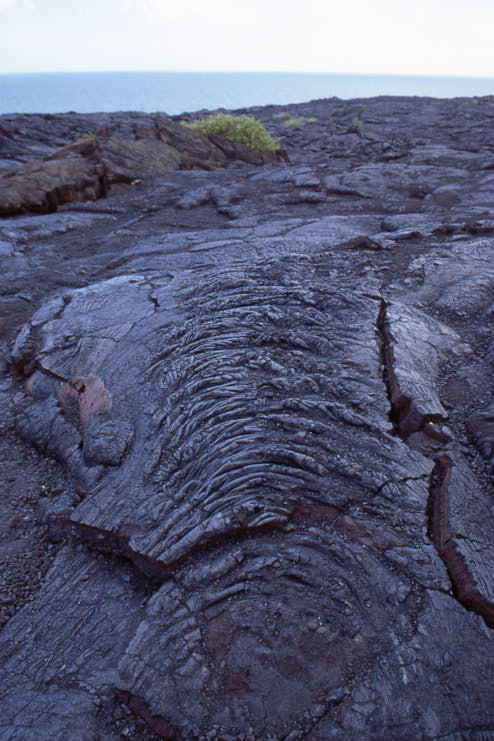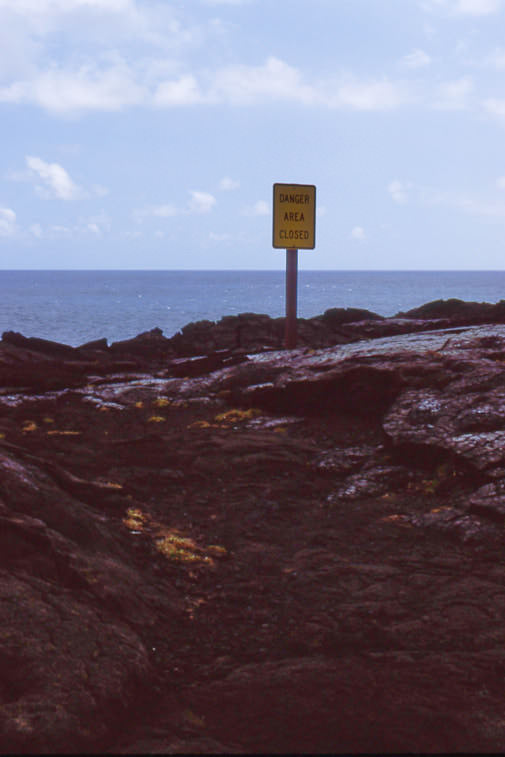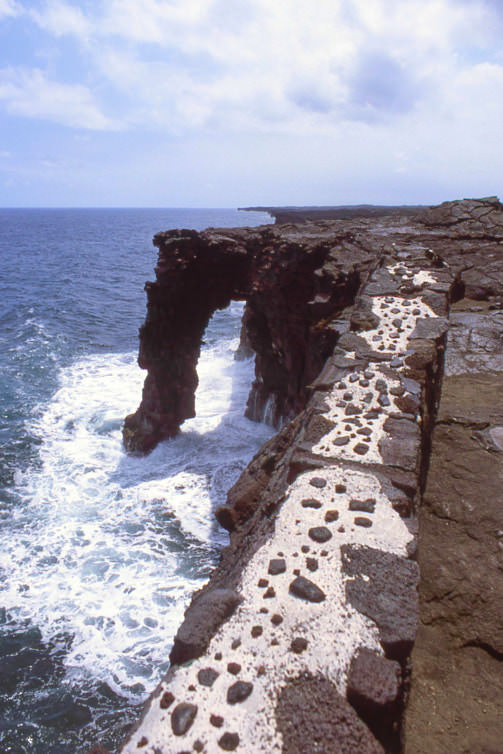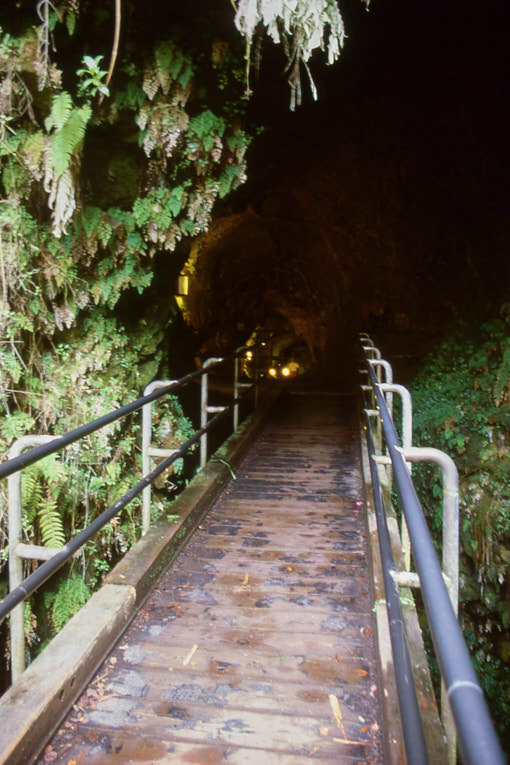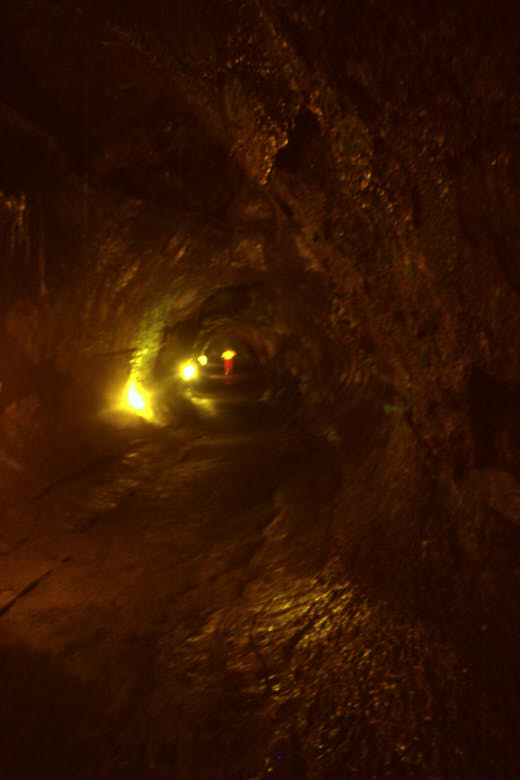General information about the National Park
The national park protects the area of the active volcano Kilauea and the lava fields surrounding it. Since 1987, the area has been a UNESCO World Heritage Site.
Number of visitors
In 2023 Hawaii Volcanoes NP ranked 19th in the visitor statistics of most visited national parks.
Best time to visit: Spring and fall
Our visits:
So far 1 visit: August 2000
Entrance fees and opening hours
- 30$/car and all passengers valid for 7 days
- Covered by the Anual Pass*
- Open 24h all year round.
*The Anual Pass is so to speak the "flat rate" for all Parks managed by the National Park Service. The pass costs a one-time fee of $80 and can be purchased at the entrance to each National Park, National Monument, etc. The pass is valid for 13 months.
Halemùmaù Krater
Description: Halemumau is a shaft crater in the caldera of Kilauea volcano. The crater is almost circular and has very steep walls.
Our rating: When we visited the national park in August 2000, it was possible to drive around the crater on a tarred road. There were a few viewpoints and also a small hiking trail that led directly to the crater rim. This is no longer possible, because in March 2008 after 84 years the crater became active again. There were several eruptions that caused the road and also the whole area around the crater to become very unstable. The crater was active until May 2018. Today, the road and also the whole area can be visited only from a distance.
Chain of Craters Road
Description: The Chain of Craters Road leads along the southern flank of the Kilauea volcano down to the ocean. One of the highlights to watch in Hawaii was definitely the active volcano that was still spewing lava here on the Big Island at the time. Of course, you couldn't get that close to the lava, but still you could see the places where the lava was flowing into the ocean from the road.
The lava originated from Vukan Puu Oo, located on the southeastern flank of Kilauea. Its first eruption took place in 1983 and lasted until 2018. In 1992, the lava reached the Chain of Crater Road and buried it. Since then, it is also no longer possible to drive along the southern coast of the island.
Our rating: From the place where the road was buried by lava, it was possible to hike a piece on the lava field in the direction of the active lava flow in 2000. Of course, this was done at your own risk. Although the lava on which one hiked had cooled down for several years, nobody knew how stable the ground was. The lava in Hawaii is very fluid and moves mostly underground in tubes. The hike across the lava field was tolerated, but it was still strongly discouraged.
During our visit we hiked a bit along the coast on the lava field. This was super interesting and bizarre. The hike was very difficult, because the ground was very uneven and so it was constantly somewhere up or down. Nevertheless, it was an experience we will never forget. In the end, we only saw red glowing lava in the evening through the ranger's binoculars. But even that was very fascinating and interesting.
In 2014, an emergency road was built across the lava, which now leads along the south coast, to the other side of the PuuOo stream. Of course, the road may not be driven by tourists. Whether one can hike on it again after the last eruption in 2008, we do not know. But you can get current information about this at the visitor center of the national park.
Nahuku Thurston Lava Tube
Description: Within the territory of the national park you can also walk through a tunnel, which was formed by a lava flow about 500 years ago. The 20ft high and 591ft long tube, is a very impressive testimony of how the lava of the volcano here in Hawaii mainly moves.
Our rating: We really enjoyed the short hike to and through the Lava Tunnel. We enjoyed hiking the short path through the earth's history.

